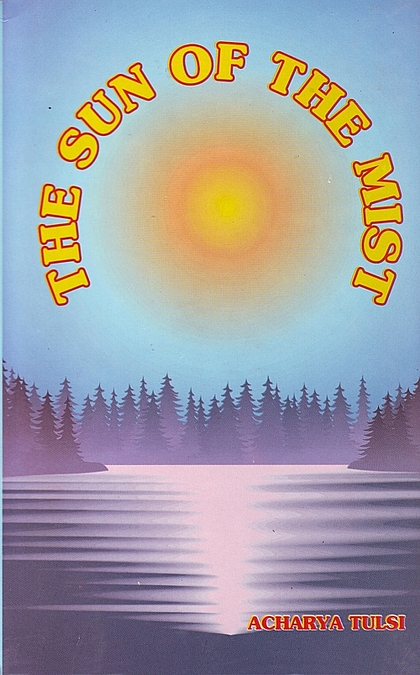On 11th July, 1987, the Terapanth Dharam Sangh, after completing 227 years of its existence, entered the 228th. The past glory, the present vigilance and the dreams of the future are going to keep the individuality of Terapanth very much alive. The responsibility for preserving, reforming and vitalizing the individuality of a religious organisation devolves upon every member. Acharya Bhikshu was the founder of Terapanth. He did not formally establish this organisation. His spiritual pursuit started in the year 1808 of Vikramera. At that time his brain was full of new hopes and dreams. When, after 8 years’ continuous effort, these hopes and dreams remained unfulfilled, he resolved to establish them anew. He had with him some monks. On the occasion of Asadh Shukla Purnima, 1817 (the 15th day of the lunar fortnight in the month of Asadh), he started giving initiations. At that time some of his other colleagues were elsewhere. A direction had been issued to them. It was finally decided that on the completion of Chaturmas (four months of the rainy season spent by Jain monks at one place), all the monks would get together. In case of homogeneity of faith and conduct, they might choose to live together; otherwise each would continue his search alone.
That full-moon day in the month of Asadh proved historic. On that day, without any pre-thought or plan, the foundation of the terapanth dharma sangh was laid. That is why this day is now celebrated as the Foundation day. How very fascinating and inspiring must have been that moment when in the form of the newly-founded terapanth, two things were introduced in the tradition of religious organisations—the primacy of character and strong discipline. The fundamental basis of monk-life is character, and an organisation is founded upon discipline. The Acharya Bhikshu wisdom, mature by experience seized upon these facts and implanted them firmly in the structure of a new organisation. The establishment of Terapanth gave birth to a living movement, a new vision and a new ideology, the fruition of which may be outlined as follows:
Stabilisation of some criteria of religion, such as:
"Renunciation is religion; the pursuit of pleasure is non- religion."
"Discipline is religion; self-indulgence is non-religion."
"Non-violence is religion; violence is non-religion."
"Change of heart is religion; use of force is non-religion.
-
Abandonment of rigid and meaningless traditions prevalent in the field of religion.
-
Change in the mentality of purchasing religion and of enticing people into religion with money-power.
-
The impropriety of worldly conduct inspired by temptation of acquiring religion or merit. The society has its own norms, with which religion or spirituality can have no equation.
-
Social and national activities should be confined to social and national contexts. These should not be undertaken in the name of religion or virtue.
-
Religion is above social and national obligations. In order to fulfil his duty, a wildly man may have to engage himself in violence, accumulation, etc. He may be obliged to purchase weapons and wage a war. But he may not indulge in these activities under the cloak of religion. There is provision for war the field of religion, too. But there the fight is with oneself; a man battles with his own attachments and aversions. That is the commandment of religion.
-
To live a life free from attachments and aversions, to improve one’s knowledge, vision and character—these belong to the field of religion. Excepting these, all other doings fall in the category of social pursuits, or the religion of society, if one should like to put it that way. But the religion of the spirit and the religion of society are two separate things, and their paths are different.
-
The emergence in the midst of monk-institutions, of an orderly, disciplined religious organisation; an institution of monks and nuns having complete faith in and working under the guidance of one Acharya, so that there is little occasion for any possibility of disintegration to develop.
- The termination of the thousand-year old institution of discipleship of some such development as mentioned above, the Terapanth Dharam Sangh has been the crusader, and it has helped in the growth of a constructive outlook. The classic lustre of the work accomplished in the field of meditation, education and art, Owens itself to the cohesive, well-knit set-up of the religious organisation. The tradition of service that has blossomed here has provided the old, the sick and the crippled members of the organisation with assurance of stability and freedom from care. How long wills such an efficient and adorable organisation continues? When this question came up before Acharya Bhikshu, he said, “As long as the monks and nuns of this Sangh continue to be persons of good character and morality, no harm would ever come to it."
This prophecy of AcharyaBhikshu would always serve for us as an inspiration, a pillar of light, and as provisions for the journey ahead. With this as our support, we shall continue to march ahead. Let us always appraise the purity of our conduct. Let us water for, ever the seed of morality and wear the armour of propriety. In the Terapanth Dharam Sangh there is opportunity for every member to blossom forth and to fulfil himself. Keeping Within the limits of propriety and his own capabilities, any individual can go forward. But he who seeks personal exaltation by lowering the prestige of the organisation, and is ambitious for position and honour, has no place here. The transcendent personality of Acharya Bhikshu, after much travail and hardship, prepared for our Sangh a sturdy ground. It is desirable that we walk firmly into his footsteps, to touch new heights of progress. On the occasion of the Foundation Day of Terapanth, let us begin our pilgrimage for the New Year with this determination.
 Acharya Tulsi
Acharya Tulsi
